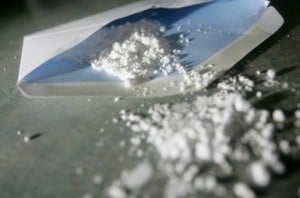Scientific Data Points to Government-Made Anthrax

FBI documents released to the public in 2011 contain strong evidence that the anthrax spores used in the letter attacks of 2001 had been prepared previously for U.S. biodefense purposes. We have recently compiled and analyzed the documents, which contain some 10,000 pages of scientific data, in the “Journal of Bioterrorism & Biodefense.”*
Although genetic analysis indicates that anthrax spores in a flask at the U.S. Army Medical Research Institute for Infectious Diseases are the likely parental source from which the letter spores were grown, the USAMRIID spores do not contain two extraneous chemical elements and a non-anthrax type of spore found by the FBI in the letter anthrax; nor has evidence been found at USAMRIID for any use of these items.
The two chemical elements, tin and silicon, must have been added to process the letter spores following their growth, for the toxicity of tin would have prevented growth, and the uniquely high silicon content of the spores has never been replicated during growth. The two chemicals are components of a well-known type of protective coating called silicone (a complex substance containing the element silicon). Silicone has been used in the past to encapsulate pharmaceuticals in order to protect them from inactivation by external hazards without impairing their biological action.
Microencapsulation of the attack spores with silicone would explain the presence, locations and amounts of the two extraneous chemical elements, for which no other explanation has ever been offered. Methods are available for determining whether or not silicone is present in the attack spores, but there is no evidence that this has been done.
In the case of biological weapons like anthrax, microencapsulation could be used to prevent their detection as well as to protect them from inactivation. A plan to test the effects of microencapsulation on the detection of pathogens was spelled out in the Department of Defense’s unclassified annual budget justification documents issued in 1999, 2000 and 2001 for the Biological Warfare Defense program, under which DARPA (the Defense Advanced Research Projects Agency) was developing a biological weapons detection system. The budget document for 2002 stated that the plan had been accomplished in 2001. Evidently, the DARPA project had been supplied with microencapsulated pathogen(s) in the year of the letter attacks. Dry anthrax spores were one of the pathogens known to be under study by DARPA in 2001. Antibioterrorism training and vulnerability assessment were also underway in the U.S. at the time and may have utilized any anthrax spore preparations that were available.
Only one laboratory, the Army laboratory at Dugway Proving Grounds in Utah, is known to have made active, dry anthrax spores (an arms-control, treaty-sensitive activity) before the attacks. In its Department of Defense budget justification, Dugway also expressed an interest in microencapsulation. FBI data indicate traces of tin in some anthrax spores made there, but not in any spores made elsewhere. Battelle Memorial Institute was operating the Dugway laboratory in 2001. Battelle possessed anthrax spores that have been shown by the FBI to be a genetic match with the letter spores.
Both Dugway and Battelle utilize dry spores of Bacillus subtilis, a related but non-pathogenic bacterial species that is frequently used as a convenient simulant or model for anthrax. The non-anthrax contaminant found in the letter anthrax is a sub-species of Bacillus subtilis that has a unique genetic sequence, making it a potential institutional “fingerprint.” The FBI did not find it at USAMRIID. There is no evidence that they searched Dugway or Battelle.
When viewed together, these facts imply that the attack spores were processed with tin-and silicon-containing materials under government auspices, probably to microencapsulate them for use in detection and other defense studies. The process of spore microencapsulation requires special expertise, specific documented chemicals, and sophisticated facilities. The known clues point to Dugway or Battelle, not USAMRIID, as the site where the attack spores were prepared. Crucial evidence that would prove or disprove these points either has not been pursued or has not been released by the FBI.
*The relevant articles in the “Journal of Bioterrorism and Biodefense” can be viewed atwww.omicsonline.org/2157-2526/2157-2526-S3-001.pdf and www.omicsonline.org/2157-2526/2157-2526-S3-008.pdf
Barbara Hatch Rosenberg and Martin Hugh-Jones are biological scientists with a special interest in the control of biological weapons. Barbara Hatch Rosenberg writes from Northampton, Mass. Hugh-Jones writes from Baton Rouge, La.

